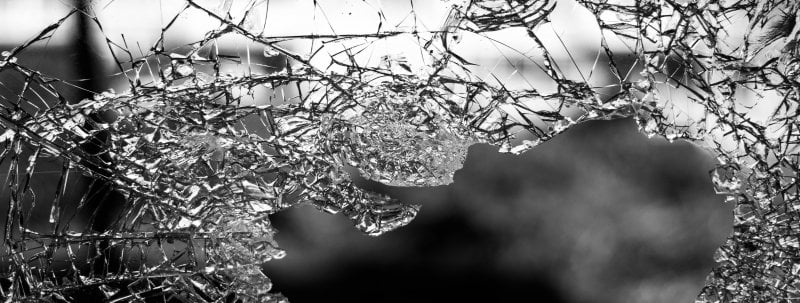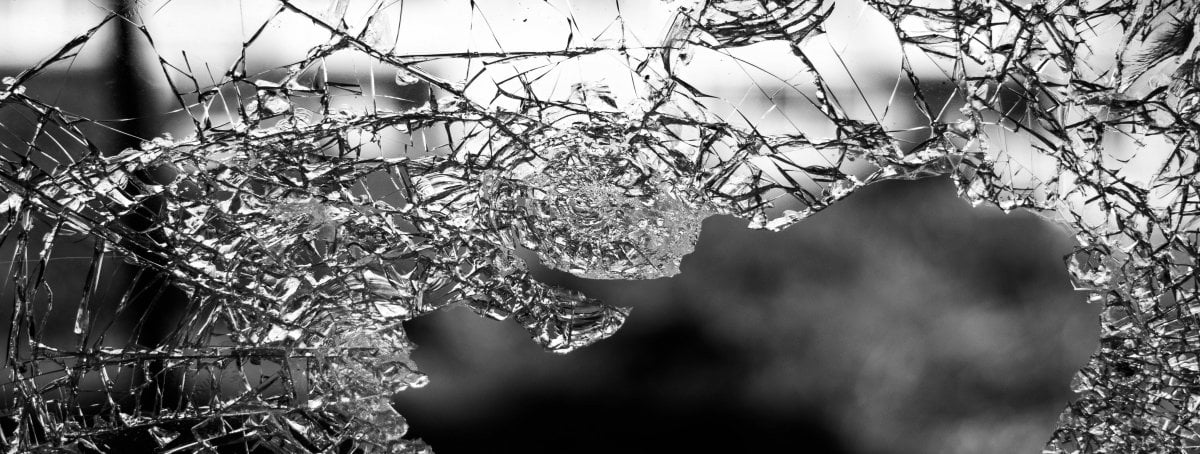There’s a method to modeling cracking in brittle materials.
The strength of teeth is told on the scale of millimeters. Porcelain smiles are kind of like ceramics — except that while china plates shatter when smashed against each other, our teeth don’t, and it’s because they are full of defects.
Those defects are what inspired the latest paper led by Susanta Ghosh, assistant professor in the Department of Mechanical Engineering-Engineering Mechanics. The research came out recently in the journal Mechanics of Materials. Along with a team of dedicated graduate students — Upendra Yadav, Mark Coldren and Praveen Bulusu — and fellow mechanical engineer Trisha Sain, Ghosh examined what’s called the microarchitecture of brittle materials like glass and ceramics.
Microarchitecture
Materials can be studied at the atomic, nano and micro levels. Microarchitecture refers to engineering the geometry of materials at the micron-scale.
“Since the time of alchemists people have tried to create new materials,” Ghosh said. “What they did was at the chemical level and we work at the microscale. Changing the geometries — the microarchitecture — of a material is a new paradigm and opens up many new possibilities because we’re working with well-known materials.”
Shatterproof Glass
Stronger glass brings us back to teeth — and seashells. On the micro level, the primary hard and brittle components of teeth and shells have weak interfaces or defects. These interfaces are filled with soft polymers. As teeth gnash and shells bump, the soft spots cushion the hard plates, letting them slide past one another. Under further deformation, they get interlocked like hook-and-loop fasteners or Velcro, thus carrying huge loads. But while chewing, no one would be able to see the shape of a tooth change with the naked eye. The shifting microarchitecture happens on the scale of microns, and its interlocking structure rebounds until a sticky caramel or rogue popcorn kernel pushes the sliding plates to the breaking point.
About the Researcher
That breaking point is what Ghosh studies. Researchers in the field have found in experiments that adding small defects to glass can increase the strength of the material 200 times over. That means that the soft defects slow down the failure, guiding the propagation of cracks, and increases the energy absorption in the brittle material.
“The failure process is irreversible and complicated because the architectures that trap the crack through a predetermined path can be curved and complex,” Ghosh said. “The models we work with try to describe fracture propagation and the contact mechanics at the interface between two hard-brittle building blocks.”
Finite Element Method
Microarchitecture patterns in nature cut their teeth on an evolutionary timeline. Materials scientists and engineers work in shorter spans, so they are developing tools to figure out the best defects and their ideal geometries. Finite element method (FEM) is one such technique.
FEM is a numerical model that takes apart a complex whole by evaluating separate pieces — called finite elements — then puts everything back together again using the calculus of variations. Humpty Dumpty and all the king’s men would have liked FEM, but it’s no quick roadside trick. To run such complex calculations requires a supercomputer, like Superior at Michigan Tech, and ensuring that the right inputs get plugged in takes diligence, patience and a keen eye for coding detail. Using FEM for super strong glass means modeling all the possible interactions between the material’s hard plates and soft spots.

Analytical Modeling
Ghosh and his team recognized that although FEM provides accurate solutions, it is time consuming and not suitable when working with a large number of models. So, they came up with an alternative.
“We wanted a simple, approximate model to describe the material,” he said, explaining the team used more basic math equations than the FEM calculations to outline and describe the shapes within the material and how they might interact. “Of course, an experiment is the ultimate test, but more efficient modeling helps us speed up the development process and save money by focusing on materials that work well in the models.”
Both the FEM and analytical microarchitecture modeling from Ghosh’s lab can help make ceramics, biomedical implants and the glass in buildings as tough as our teeth.
Michigan Technological University is an R1 public research university founded in 1885 in Houghton, and is home to nearly 7,500 students from more than 60 countries around the world. Consistently ranked among the best universities in the country for return on investment, Michigan's flagship technological university offers more than 185 undergraduate and graduate degree programs in science and technology, engineering, computing, forestry, business, health professions, humanities, mathematics, social sciences, and the arts. The rural campus is situated just miles from Lake Superior in Michigan's Upper Peninsula, offering year-round opportunities for outdoor adventure.





![Tech’s annual Computing [MTU] Showcase comes to campus Oct. 2-4.](http://www.mtu.edu/news/2024/09/images/cyber-security-202110070277-banner450.jpg)

Comments